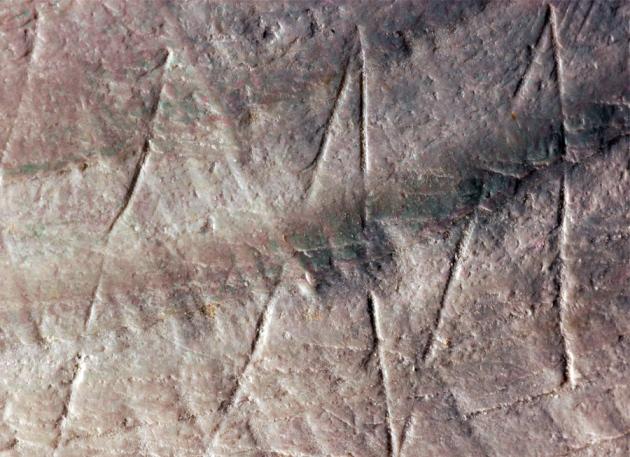The World’s Oldest Art May Be This 430,000-Year-Old Zigzag on a Shell
The history of artistic expression got stretched back a few hundred thousand years this week with the identification of an engraved shell believed to have been carved by Homo erectus. That early human ancestor could rattle the long-held belief that the use of deliberate visual expression is specific to Homo sapiens.
As National Geographic reported, the mussel shell is marked with deep zigzags and is believed to be at least 430,000 years old, much more ancient than the South African cave art dating between 70,000 and 100,000 years ago that was previously considered the world’s oldest. The shell was unearthed from an Indonesian riverbank in the 1890s by an expedition led by Eugène Dubois. However, it wasn’t until seven years ago that researchers noticed something significant about the shell.
Archaeologist Josephine Joordens of Leidens University in the Netherlands collaborated with anthropologist Steven Munro on research published this week in the journal Nature titled “Homo erectus at Trinil on Java used shells for tool production and engraving.” They note that the “manufacture of geometric engravings is generally interpreted as indicative of modern cognition and behaviour,” and is often considered unique to Homo sapiens. However, their data indicates that the engraving was made by Homo erectus and is thus “considerably older than the oldest geometric engravings described so far.”
Zigzags were apparently a popular early design choice for hominin artists — one also appears on the Cooper Skull, the oldest painted skull in the Americas. However, what will really affirm the use of abstract symbols as a pre-Homo sapien ability will be more examples. It’s significant to note that the shell site in Java, Indonesia, is also where Dubois in the 19th century found and identified the Java Man, which introduced Homo erectus as a missing link in human ancestry. It was a controversial idea at the time, later supported by similar finds in Asia and Africa. Perhaps now that researchers have found the hidden details on this artifact, other archaeologists and anthropologists might take a closer look at otherHomo erectus remains, and see just how far back the human impulse for visual expression goes.
Read the complete “Homo erectus at Trinil on Java used shells for tool production and engraving” article online in the journal Nature.
Source: http://hyperallergic.com/
Source: http://hyperallergic.com/









